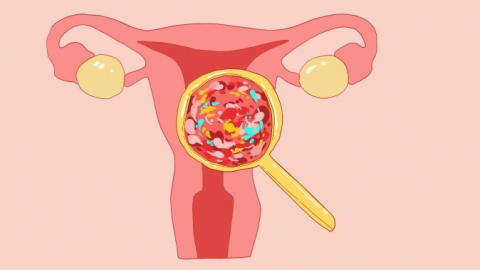How is bacterial vaginosis treated?
Generally, bacterial vaginitis usually refers to bacterial vaginosis. Bacterial vaginosis may be caused by excessive vaginal cleansing, decreased immunity, trichomonas vaginitis, mycoplasma vaginitis, chlamydia vaginitis, and other factors. The treatment method needs to be selected based on the specific cause to achieve therapeutic effectiveness. Prompt medical consultation is necessary, and treatment should be conducted under medical guidance. Details are as follows:

1. Excessive Vaginal Cleansing: The vagina contains beneficial bacteria such as lactobacilli, which help maintain vaginal acid-base balance and microbial equilibrium. However, when women excessively use cleansers or frequently douche the vagina, this natural microbial balance can be disrupted, allowing harmful bacteria to proliferate and cause bacterial vaginosis. It is advisable to avoid over-cleansing the vagina and reduce the frequency of using cleansers or douching.
2. Decreased Immunity: When immunity declines, the body's resistance to pathogens weakens, making it easier for the normally balanced vaginal flora to become imbalanced, allowing harmful bacteria to multiply and cause bacterial vaginosis. Immunity can be enhanced through lifestyle improvements and a healthy, balanced diet.
3. Trichomonas Vaginitis: Trichomonas vaginitis is caused by infection with Trichomonas vaginalis. Trichomonas vaginalis can damage the vaginal mucosal barrier, trigger an inflammatory response, and lead to symptoms such as increased vaginal discharge with an unpleasant odor, accompanied by itching of the external genitalia. Antimicrobial and anti-inflammatory medications such as metronidazole vaginal suppositories, clotrimazole tablets, and amoxicillin capsules may be used under medical guidance.
4. Mycoplasma Vaginitis: Mycoplasma vaginitis is caused by mycoplasma infection. Mycoplasma is a small microorganism between bacteria and viruses that can damage the vaginal mucosal barrier, cause an inflammatory response, and result in mucopurulent vaginal discharge accompanied by burning pain. Medications such as erythromycin tablets, azithromycin tablets, and moxifloxacin hydrochloride tablets should be used under medical supervision to treat the infection.
5. Chlamydia Vaginitis: Chlamydia vaginitis is an inflammation caused by chlamydial infection of the vagina. Chlamydia is a Gram-negative bacterium that can be transmitted through sexual contact. When chlamydia infects the vagina, it disrupts the normal vaginal flora balance and causes inflammation, characterized by increased vaginal discharge. Treatment should follow medical advice using medications such as roxithromycin dispersible tablets, doxycycline hydrochloride tablets, and minocycline hydrochloride tablets to inhibit chlamydial infection.
During treatment, it is important to follow medical instructions, take medications on time, and pay attention to adjusting lifestyle habits and dietary habits to promote recovery.







